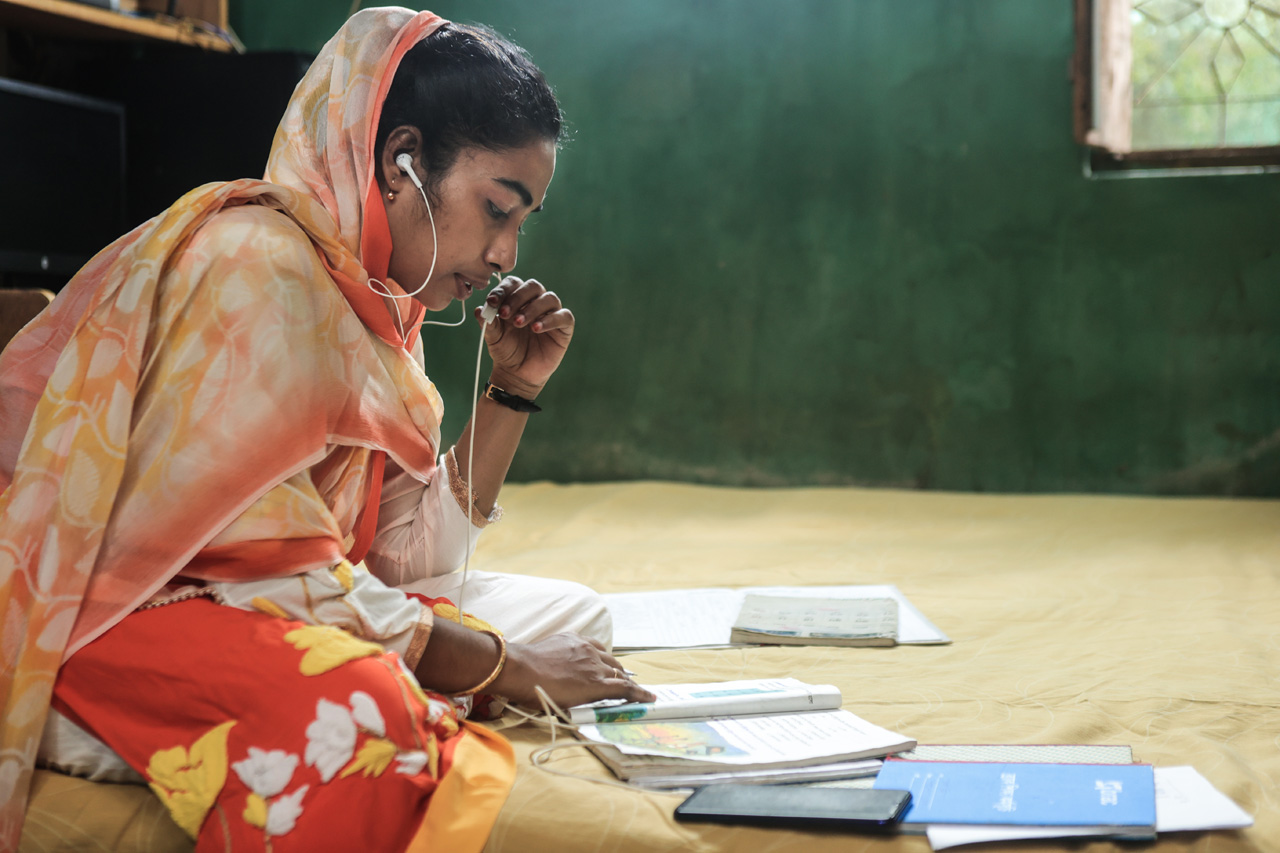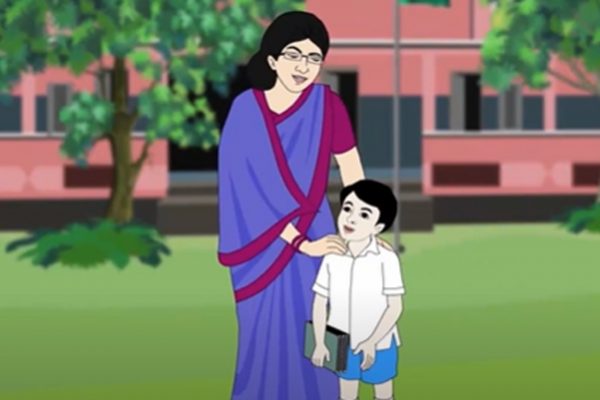Amidst almost-empty classrooms in many schools, others have 90% of their students back. What’s their secret?
Reading Time: 3 minutes
Schools have finally reopened in Bangladesh, after 18 long months. Many schools are reporting lower student numbers, particularly of girl students. A school in Kurigram reported that just one girl student had returned to her class – the rest had been married during school closures. BRAC’s schools, where students often have the least internet access and support at home, and where teachers stayed in constant communication through phones, home visits and home-based projects, paint a different picture.
Many of BRAC’s schools reported 90% attendance in the first week of reopening. While this can be partly attributed to the excitement of schools reopening, and there are still significant challenges ahead in terms of keeping students engaged and addressing education gaps, it is an exciting start.
What are the likely reasons behind the high attendance?
One is teachers.
Teachers brought school to doorsteps during the pandemic. This was vital for BRAC’s students, many of whom are the first to attend school in their families. Students often do not have family members to support them with learning at home, so teachers provided projects for students to do at home, walked miles to visit students at home whenever there were breaks in lockdown, and delivered the curriculum over low-cost feature phones.
Initially, when schools in Bangladesh were closed to curb the spread of COVID-19 in 2020, the Government of Bangladesh introduced a television programme called Ghore Bose Shikhi (Learning at Home). BRAC worked closely with the Directorate of Secondary and Higher Education and the Ministry of Primary and Mass Education to implement it.
BRAC’s teachers quickly realised it was not working for their students. Studies showed that only 16% of students in rural areas and 21% in urban areas could tune in to the programme. This was even more prevalent with BRAC’s students. Most do not have access to television. Of the ones who do, electricity was often intermittent. If there was no electricity, there would be no school. There was also the challenge of one-way communication – there was no scope for students to interact with teachers. For students who were not able to get support, their questions went unanswered.
BRAC’s teachers are from the same communities as their students, so they saw and heard these challenges firsthand. They also knew the families of the students and lived closeby. They knew that dropping out of school, even temporarily, could lead to child marriage. They implemented a two-pronged approach:
Read more: Outside the digital world: How can remote learning be redesigned outside the internet?
Phone schooling: Teachers utilised the most readily-available technology
95% households in Bangladesh have access to mobile phones, and 47% of mobile phone subscribers use 2G connections. Phone calls were the most effective way to reach students. A phone school approach was implemented, using the conference call facility.
Read more: Educating a generation: Bangladesh’s barefoot teachers

A BRAC school teacher in Bangladesh conducting phone classes. Photo credit: Sadiqur Rahman © BRAC
Classes were held through 20-minute conference calls, with three to four students at a time, twice a week. The classes were kept short, to ensure quality engagement. Teachers checked on students’ safety, security, and wellbeing, in addition to working through academic lessons. Each class followed up on what was learnt in the previous class and then introduced new topics.
Home visits: Teachers walked miles to visit their students’ homes
BRAC’s school teachers visited homes, conducting 30-minute lessons to complement the phone schooling. They adopted a variety of techniques, including getting small groups of students together in nearby facilities. Over 121,000 homes were visited during 2021.
Kamrun Nahar, a BRAC school teacher who has been teaching for over 18 years in Dhaka, shared, “I visited five students’ homes every day. They were far away from each other, and sometimes it was tiring to walk in the heat. My students’ happy faces and their parents’ cordiality kept me going.”.

A BRAC school teacher visiting a student’s home and talking to her mother. Photo credit: Sadiqur Rahman © BRAC
Adaptability of approaches was key
Teachers in urban areas faced completely different challenges to teachers in remote areas.
BRAC’s schools in urban areas are mostly located in informal settlements, where families generally live in one small shared room. Everything is done in that same room – cooking, cleaning, sleeping and studying. This presented a challenge for both teachers and students, in terms of space and noise, but the space was eventually always found or made, even if it was just for a short time.
In remote areas such as haor (wetlands), routes to students’ homes would change as water levels rose and fell. Teachers employed a combination of walking and transport by boats, depending on rainfall, often needing to use both modes of transport multiple times to reach students.
The efforts of teachers at least initially appear to be paying off. While many schools are struggling with attendance, attendance in the first week was over 90% in most BRAC schools. This rose to 92% in some schools in the second week. While the twin challenges of addressing learning gaps and keeping students in school still lie ahead, these initial numbers are exciting.
BRAC started working in education in 1985. Its high quality, affordable, scalable schooling model has made it one of the world’s largest providers of secular, private education. Its holistic approach to lifelong learning, addressing educational needs from early childhood to higher academic levels supported over 15 million students across five countries to graduate to date.
Md Faqrul Islam is a Material Development and Quality Assurance Specialist, Out of School Children Programme at BRAC Education Programme, Fahad Bin Touhid is Communication Portfolio Lead for BRAC Education Programme, and Sonali Chakma is a Communication Specialist at BRAC Communications.
Cover photo: Abdullah Al Kafi © BRAC





